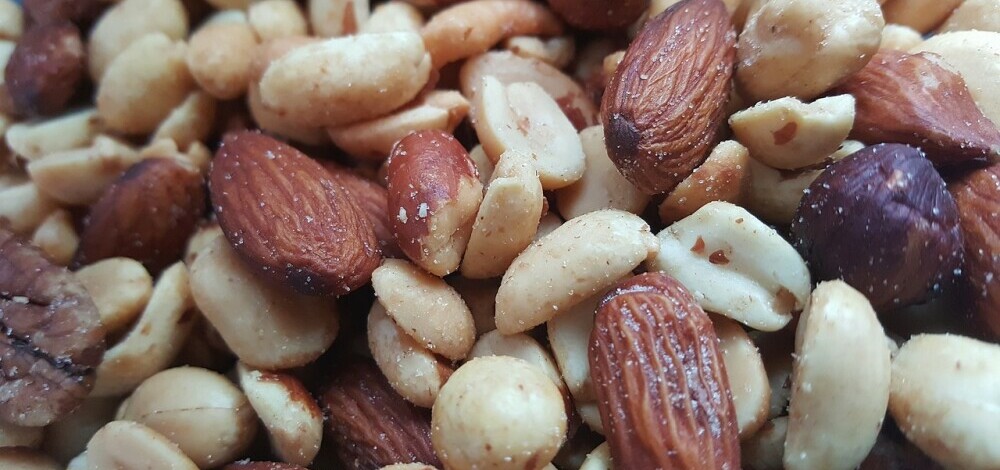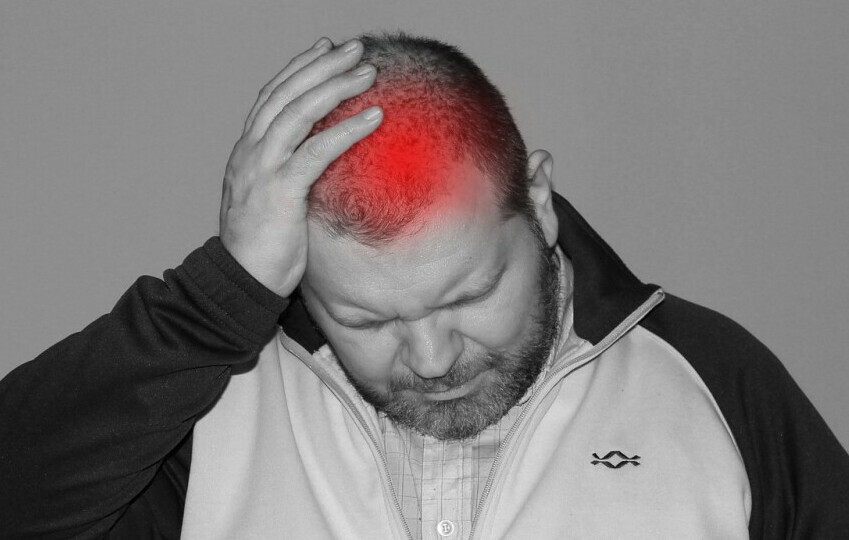Understanding Headaches: Types and Triggers
Explanation of different types of headaches: tension, migraine, cluster, etc.
What are the best Natural remedies for headaches? Headaches are a common ailment that affects millions of people worldwide. There are various types of headaches, each with its own set of symptoms and triggers.
Tension headaches are the most common type and are often described as a dull, aching pain that can be felt on both sides of the head. These headaches are often caused by stress, poor posture or muscle tension. Migraine headaches, on the other hand, are characterized by intense, throbbing pain that is often accompanied by nausea, vomiting, and sensitivity to light and sound. Migraines can be triggered by hormonal changes, certain foods or environmental factors.
Cluster headaches are a less common but extremely painful type of headache that occur in clusters or groups often around the eye. These headaches are often described as a stabbing or burning pain and can last anywhere from 15 minutes to three hours.
Other types of headaches include sinus headaches, which are often caused by sinus infections or allergies and exertion headaches, which occur during or after physical activity. It’s important to consult a healthcare professional to properly diagnose and treat the specific type of headache you are experiencing.
Common triggers for headaches: stress, dehydration, poor sleep, and diet
Headaches are a common ailment that can be triggered by a variety of factors. One of the most common triggers is stress. When we are under a lot of stress, our muscles tend to tense up, especially in the neck and shoulders, which can lead to tension headaches.
Dehydration is another common trigger for headaches. When our bodies don’t have enough water, our blood volume decreases leading to reduced oxygen flow to the brain, which can result in a headache. Poor sleep is also a major trigger for headaches. When we don’t get enough rest, our bodies can become more susceptible to headaches due to fatigue and muscle tension.
Finally, diet can play a significant role in triggering headaches. Certain foods and drinks, such as alcohol, caffeine and processed foods can lead to headaches in some individuals. By being aware of these common triggers, individuals can take steps to manage and prevent headaches in their daily lives.

The importance of identifying your headache type and triggers for effective treatment
Identifying the type of headache you are experiencing is crucial in finding the most effective treatment. There are several types of headaches, including tension headaches, migraines and cluster headaches, each with their own distinct symptoms and triggers. By understanding the specific type of headache you are dealing with, you can better manage and treat your symptoms. Additionally, identifying your headache triggers is equally important in finding relief.
Common triggers for headaches include stress, certain foods, lack of sleep and environmental factors. By pinpointing what triggers your headaches, you can take steps to avoid or minimize these triggers, ultimately reducing the frequency and severity of your headaches. Keeping a headache diary can be a helpful tool in identifying patterns and triggers.
Once you have identified your headache type and triggers, you can work with your healthcare provider to develop a personalized treatment plan that may include medication, lifestyle changes and alternative therapies. Overall, taking the time to identify your headache type and triggers is essential in finding effective treatment and improving your overall quality of life.
Why natural remedies can be a good alternative to medication for some people
Natural remedies for headaches can be a good alternative to medication for some people for a variety of reasons.
Firstly, natural remedies often have fewer side effects compared to traditional medication, making them a safer option for those who are sensitive to certain drugs or who prefer a more holistic approach to their health. Additionally, natural remedies are often more affordable and accessible, as they can be found in everyday household items or purchased at a lower cost than prescription medications.
Furthermore, natural remedies can provide a sense of empowerment and control over one’s health, as individuals can take an active role in managing their headaches through lifestyle changes, dietary adjustments and herbal supplements.
Finally, natural remedies can also offer long-term benefits by addressing underlying causes of headaches, such as stress, poor sleep or dietary imbalances, rather than simply masking the symptoms with medication. While natural remedies may not be suitable for everyone or for severe cases of headaches, they can certainly offer a viable and effective alternative for those who are open to exploring holistic approaches to managing their health.

Top Natural Headache Remedies to Try at Home
Hydration: The simplest and one of the most effective remedies
Hydration is often considered one of the simplest and most effective remedies for headaches. Dehydration can lead to headaches, as the brain is made up of around 75% water and relies on adequate hydration to function properly.
When the body is dehydrated, the brain can temporarily contract or shrink from fluid loss, leading to pain and discomfort. In addition, dehydration can also cause electrolyte imbalances, which can further exacerbate headaches. Therefore, ensuring that the body is properly hydrated is crucial in preventing and alleviating headaches.
The recommended daily water intake varies depending on factors such as age, gender, and activity level, but a general guideline is to drink at least eight 8-ounce glasses of water per day. It’s also important to note that other beverages, such as tea and coffee, can contribute to hydration, but water should still be the primary source of fluid intake. Also, consuming water-rich foods, such as fruits and vegetables, can also help maintain hydration levels.
Overall, staying adequately hydrated is a simple yet powerful way to prevent and alleviate headaches.
Essential oils: Peppermint and lavender for pain relief
Essential oils have been used for centuries as natural remedies for a variety of ailments including pain relief. Two popular essential oils known for their pain-relieving properties are peppermint and lavender.
Peppermint oil contains menthol, which has been shown to have a cooling effect when applied topically and can help to relax muscles and ease tension. This makes it a great option for relieving headaches, as it can help to reduce the intensity and duration of the pain.
Lavender oil, on the other hand, is known for its calming and soothing effects. It has been used to help alleviate stress and anxiety, which are common triggers for headaches. Additionally, lavender oil has been found to have anti-inflammatory and analgesic properties, making it an effective option for relieving headache pain.
Both peppermint and lavender oils can be used in a variety of ways for headache relief, including through inhalation, topical application or by adding a few drops to a warm bath. When using essential oils for pain relief, it’s important to dilute them properly and to use caution if you have any allergies or sensitivities. Always consult with your healthcare provider before using essential oils, especially if you are pregnant, nursing or have any underlying health conditions.

Herbal teas: Ginger and chamomile for their anti-inflammatory properties
Herbal teas have been used for centuries as natural remedies for a wide range of ailments including headaches. Two popular options for headache relief are ginger and chamomile teas, both of which are known for their anti-inflammatory properties.
Ginger has long been used in traditional medicine for its ability to reduce inflammation and alleviate pain, making it an effective choice for treating headaches. Chamomile, on the other hand, is well-known for its calming and soothing effects, which can help to ease tension and stress-related headaches.
Both of these herbal teas can be brewed and consumed as a hot beverage, allowing the natural compounds within the herbs to be released and provide relief. Additionally, these teas can also be enjoyed cold, offering a refreshing and natural alternative to over-the-counter pain medications.
It’s important to note that while herbal teas can be effective for some individuals, they may not work for everyone and it’s always best to consult with a healthcare professional before using herbal remedies for headache relief.

Dietary changes: Foods to include and avoid
Headaches can be debilitating and can greatly impact a person’s quality of life. While there are many different causes of headaches, dietary changes can play a significant role in providing relief.
Certain foods have been found to trigger headaches in some individuals, while others have been shown to provide relief. It is important to be mindful of what you are consuming and to pay attention to how certain foods may be affecting your headaches.
Foods that are commonly known to trigger headaches include processed meats, aged cheeses, alcohol and foods containing MSG. On the other hand, foods that have been found to provide relief from headaches include magnesium-rich foods such as leafy greens, nuts and seeds, as well as foods high in omega-3 fatty acids like fatty fish and flaxseeds. Staying hydrated by drinking plenty of water and avoiding dehydration can also help prevent headaches.
By making thoughtful dietary choices and paying attention to how your body responds to different foods, you may be able to find relief from headaches and improve your overall well-being.
Magnesium: Its role in preventing and alleviating headaches
Magnesium is an essential mineral that plays a crucial role in preventing and alleviating headaches. It is involved in numerous biochemical reactions in the body, including muscle and nerve function, blood glucose control and blood pressure regulation.
Research has shown that magnesium deficiency may contribute to the development of headaches, particularly migraines. In fact, studies have found that individuals who suffer from migraines often have lower levels of magnesium in their blood compared to those who do not experience migraines. Additionally, magnesium has been found to help relax blood vessels and reduce the release of certain neurotransmitters that can contribute to headache pain.
As a result, supplementing with magnesium has been shown to be effective in both preventing and reducing the frequency and severity of headaches, particularly migraines. Foods rich in magnesium include leafy green vegetables, nuts, seeds and whole grains. However, for those who struggle to get enough magnesium through their diet, supplements are also available.
It is important to consult with your healthcare provider before starting any new supplement regimen, as excessive magnesium intake can have negative effects on the body. Overall, ensuring adequate magnesium intake can be an important factor in managing headaches and improving overall health.

Yoga and Meditation: Stress relief techniques to reduce headache frequency
Yoga and meditation have long been recognized as effective stress relief techniques that can help reduce the frequency of headaches. Both practices focus on calming the mind and relaxing the body, which can alleviate the tension and anxiety that often contribute to headaches.
Yoga, with its combination of physical poses, breathing exercises and meditation, can help improve circulation, release muscle tension and promote relaxation. Meditation, on the other hand, involves focusing the mind and achieving a state of deep relaxation, which can reduce stress and anxiety levels.
Studies have shown that regular practice of yoga and meditation can lead to a significant decrease in the frequency and intensity of headaches. Additionally, these practices can also improve overall well-being, including better sleep, increased energy levels and improved mental clarity.
Incorporating yoga and meditation into a daily routine can provide long-term benefits for managing stress and reducing the occurrence of headaches.
Can Exercise Help Alleviate Headache Pain?
Exercise has been shown to have a positive impact on headache pain for many individuals. When you engage in physical activity, your body releases endorphins, which are natural painkillers. These endorphins can help to reduce the intensity of headache pain and provide relief. Exercise can also help to improve blood flow and circulation, which can be beneficial for reducing tension and migraine headaches.
However, it’s important to note that not all types of exercise may be suitable for individuals experiencing headache pain. High-intensity workouts or activities that involve a lot of strain on the neck and head may actually exacerbate headache symptoms. It’s important to listen to your body and choose exercises that are gentle and low-impact, such as walking, yoga or swimming.
It’s also important to stay hydrated and take breaks as needed during exercise to prevent overexertion which can also trigger headaches. Overall, while exercise can be an effective tool for managing headache pain, it’s important to consult with your healthcare provider to determine the best approach for your individual needs.
When to Seek Professional Help for Headaches
Signs that your headache may be a symptom of a more serious condition
In some cases, a headache may be a symptom of a more serious underlying condition. It is important to be aware of the signs that your headache may be more than just a normal occurrence. One of the key indicators is the sudden onset of severe headaches, especially if they are different from your usual headaches in terms of intensity or duration. Another red flag is if the headache is accompanied by other symptoms such as confusion, difficulty speaking, weakness or numbness in the arms or legs.
If the headache is persistent and does not respond to over-the-counter pain medication, it may be a sign of a more serious issue. It’s also important to pay attention to any changes in vision or hearing that occur alongside the headache. If you experience any of these symptoms, it’s crucial to seek medical attention promptly to rule out any serious conditions such as a brain tumor, aneurysm or meningitis.
Always trust your instincts and don’t hesitate to consult a healthcare professional if you have concerns about the nature of your headaches. Early detection and treatment of any underlying conditions can significantly improve outcomes and prevent potential complications.

How a healthcare professional can help with chronic or severe headaches
Healthcare professionals play a crucial role in helping individuals who suffer from chronic or severe headaches. Professionals, such as neurologists, primary care physicians and pain specialists, are trained to diagnose and treat various types of headaches, including migraines, tension headaches and cluster headaches.
They can provide a comprehensive assessment to determine the underlying cause of the headaches, which may include conducting a thorough medical history, physical examination, and possibly ordering diagnostic tests such as imaging studies or blood work. Once the cause of the headaches is identified, healthcare professionals can develop a personalized treatment plan to help alleviate the symptoms and improve the patient’s quality of life. This plan may include a combination of medications, lifestyle modifications and alternative therapies such as acupuncture or biofeedback.
Healthcare professionals can also offer support and education to help individuals better manage their headaches, including identifying triggers, practicing stress-reduction techniques and establishing a regular sleep schedule. By working closely with a healthcare professional, individuals with chronic or severe headaches can receive the necessary care and support to effectively manage their condition and reduce the impact it has on their daily life.
The importance of a personalized approach to headache treatment
While there are many over-the-counter medications available for headache relief, it is important to recognize that not all headaches are the same. A personalized approach to headache treatment takes into account the unique characteristics of each individual’s headaches, such as their frequency, severity, triggers and response to different treatments. By tailoring treatment plans to the specific needs of each patient, healthcare providers can improve the effectiveness of headache management and reduce the risk of side effects from unnecessary medications.
A personalized approach allows for a more holistic understanding of the underlying causes of headaches, which may include factors such as stress, diet, sleep patterns and other health conditions. This can lead to more comprehensive and sustainable solutions for headache management, rather than just temporary relief.

I hope you have enjoyed, and will benefit from, this content on the best natural remedies for headaches. If you have questions or comments I invite you to do so in the ‘Leave a Reply’ section below. Finally, if you would like to be notified as updates are made to the content here at 65 and Fabulous enter your name and best email in the form below.

Grant Rayner
